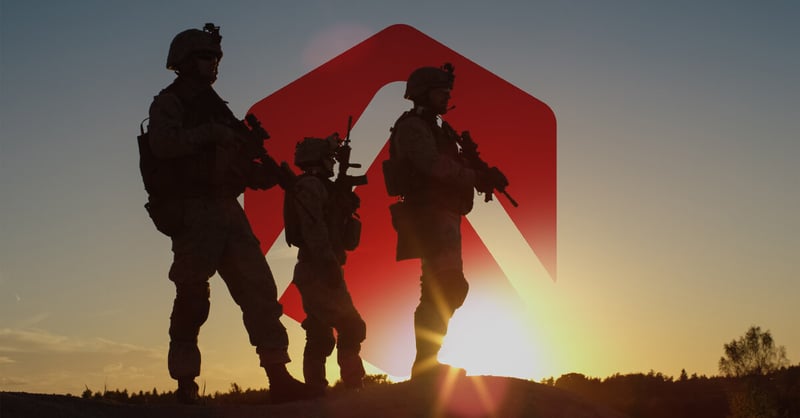
Data is revolutionizing the way we do business. It should be no different for the military.
In 2018, then-Secretary of Defense Jim Mattis articulated the need for the armed forces to “pursue urgent change at significant scale.” We are “emerging from a period of strategic atrophy,” he wrote in the National Defense Strategy, and he identified readiness as a priority for the military to achieve its objectives in the face of heightened geopolitical competition and technological advancement.
That readiness — our forces’ ability to accomplish their objectives and fulfill their missions — is largely a function of warfighter health and fitness. Recruitment numbers are dwindling as less and less Americans are able to pass the basic physical fitness test. And once in the service, attrition is a major challenge, much of which can be attributed to shockingly high rates of training-related injuries. According to the most recent statistics, 14% of our military forces are non-deployable at any given time.
The problem lies not just with the warfighters themselves but also with the blunt instruments we’ve been using to select, train, and deploy them. Technological advancements stand to change all this, giving us the actionable data we need to sharpen our efforts.
Force plates are scale-like objects that use sensors to measure the force reaction caused by activities such as walking, jumping, and even planking. They can provide us granular data into how an individual’s body moves and their relative strength and weakness. This data represents an enormous leap forward. Scanning an individual takes very little time and can provide a complete, personalized assessment. But the force plate alone is not enough.
Force plates render raw data — a bunch of numbers that without a data scientist to interpret, standardize, and contextualize them, are essentially meaningless for the individual scanned or those responsible for their training and deployment. On its own, a force plate cannot provide a diagnosis, let alone offer insight on how to correct for possible weaknesses and make traction toward readiness.
This is where we have made the greatest advancements.
Sparta Science technology leverages machine learning to analyze the raw data collected from the force plate, identify common injury patterns and predictors, and recommend exercises and training regimens to counteract them. This kind of machine learning has revolutionized physical training of all types. Recognizing each individual’s strengths and weaknesses not only empowers them to take ownership of their health and avoid injury; it also helps them work more effectively within a team. In essence, deploying force plate machine learning technology is a countermeasure to the war against wear and tear of an individual warfighter.
Last year, the Australian Third Brigade engaged Sparta Science to provide a proactive way to address individual soldiers’ injury risk. Deploying the technology, it became readily apparent to everyone what a difference it could make at scale. “With Sparta, we could scan 3,500 soldiers within a week and were easily able to identify problem areas for people, instead of having to wait until they were broken,” said Brigadier General Scott Winter.
Maj. Gen. (Ret.) Spider Marks, Former Army Ranger, sees the value as equally applicable in the U.S. context. “When there is data that shows how or where you can improve, it helps hold people accountable because they don’t want to let others down, and you trust them to do the same.”
In the military, trust and accountability are imperative. When individuals have access to data that shows their strengths and weaknesses, they can be empowered to take ownership of these deficits and improve — both for themselves and their team.
The data also unapologetically acknowledges that each soldier is an individual. “We realized one size fits all breaks a lot of soldiers. The Army today is trying to establish a standard that allows practical application of physical readiness that can be used against force requirements, but everyone brings different skills,” Marks added.
The data also unapologetically acknowledges that each soldier is an individual. “We realized one size fits all breaks a lot of soldiers. The Army today is trying to establish a standard that allows practical application of physical readiness that can be used against force requirements, but everyone brings different skills,” Marks added.
Force plate machine learning doesn’t just enable individuals’ ownership over their physical vulnerabilities; it gives military leaders access to data to build and train warfighters more precisely.
Reducing unknowns is crucial in any military strategy, and being able to better predict where physical vulnerabilities lie could optimize how recruits train or how soldiers recover from injuries. It helps ensure readiness at the highest levels.
In recent years, the military has become increasingly interested in the benefits of machine learning and AI for their equipment and weapons, helping them transition from a reactive maintenance model to a predictive one. It’s time to put these technologies to use for the military’s most valuable asset — its people.
Recently, Congresswoman Jackie Speier and Congressman Ro Khanna have championed the cause. With their help, the report accompanying the current House and Senate versions of the 2021 National Defense Authorization Act includes a requirement that DoD assess how force plate machine learning can be leveraged to improve warfighter readiness. If it passes, we could already be on the path toward revolutionizing military fitness and recovery regimes.